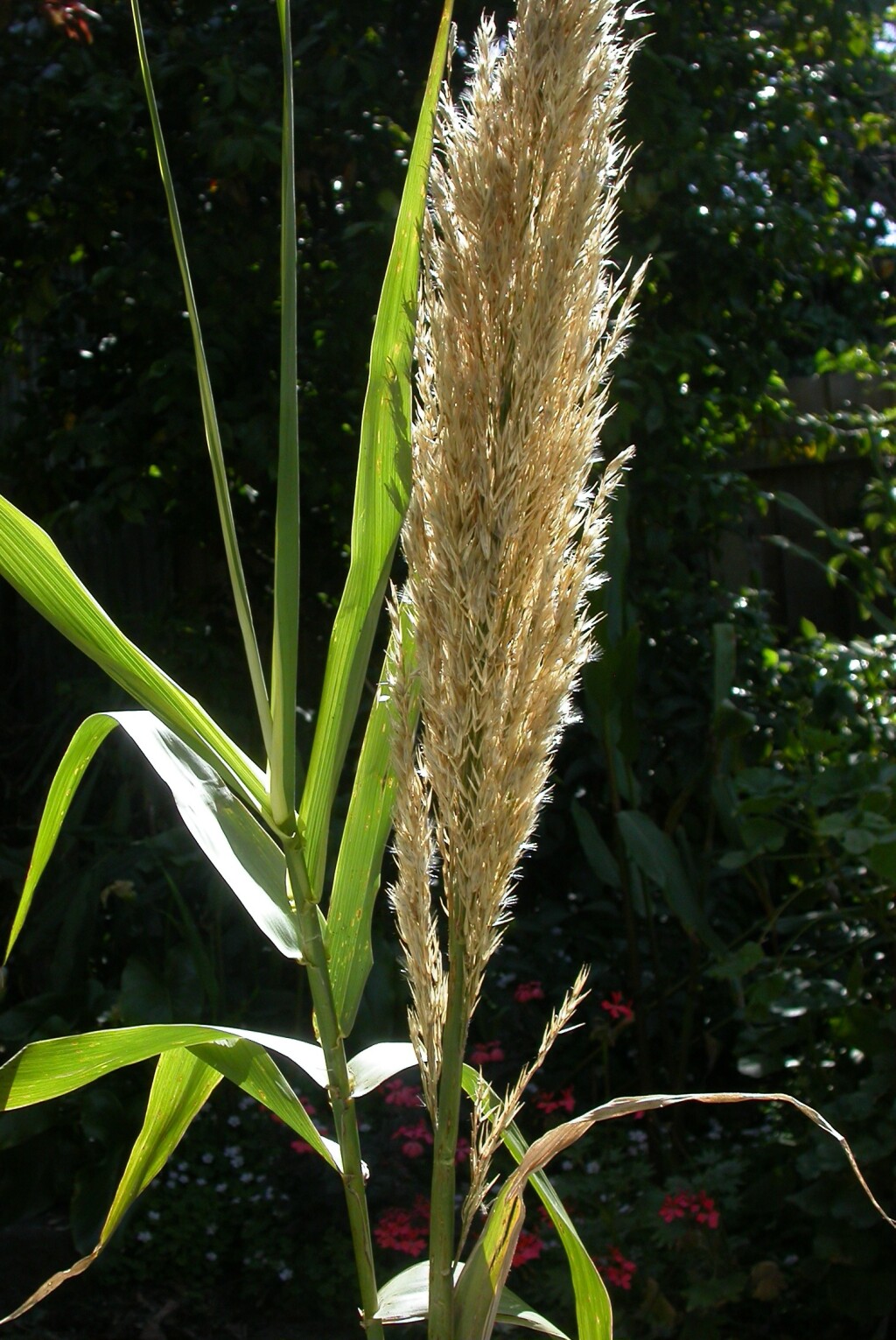Arundo donax
L. Giant ReedBamboo-like perennial; culms erect, to 6 m high, usually >1 cm diam toward base. Leaves glabrous; blades mostly 30–80 cm long, 20–80 mm wide, somewhat glaucous; auricles rounded, yellowish; ligule 1–2 mm long. Inflorescences narrowly ovate, 30–70 cm long, contracted to loosely spreading, fluffy; spikelets abundant, 10–15 mm long, 3–5-flowered; glumes subequal or equal, 11–14 mm long, often tinged pink at least when young; lemma 2-lobed, 7–8mm long (excluding lobes), villous; lobes 1–2 mm long, central awn 1–3 mm long; palea about two-thirds as long as lemma, villous. Flowers Mar.–May.
MuM, GleP, VVP, VRiv, GipP, OtP, Gold, HSF. Scattered plants occur along watercourses, presumably from water-borne fragments of rhizome. Established colonies are known along the Murray River floodplain and associated lake systems downstream of Swan Hill.
The primary mode of reproduction reported over majority of world distribution is vegetative, however some populations in Asia have been reported to produce viable seed. It is not known if or how often plants are established from seed in Australia.
 Spinning
Spinning




